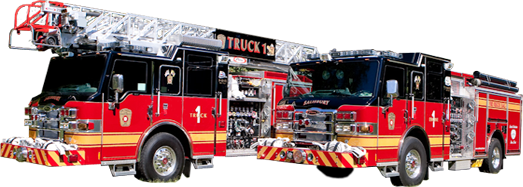Photo Gallery
Here's some valuable information provided by the City of Salisbury's Safety Manager, Frank Ennis. It provides risk management and practices to help keep you from dealing with what could be a significant disaster!
PREVENTING FROZEN AND
BURSTING WATER PIPES
Indoor pipes can freeze, depending on such variables as outside temperature, inside temperature, insulation and placement in the building. Pipes in attics, above ceilings, in crawl spaces and basements, and near exterior walls are highly vulnerable to freezing, especially where there is poor insulation, wall cracks or other openings that allow entry of cold outside air. Monitor important risk control equipment, such as water-based fire protection systems (automatic sprinkler systems, fire pumps, hoses and hydrants). Whether or not piping in these systems actually bursts, any freezing of water can block water flow, preventing proper operation in case of fire. These systems must remain heated and ice-free to minimize losses from fire and water damage. Depending on the hazard, a wet pipe sprinkler system could be converted to a dry system.
RISK CONTROL BEST PRACTICES
To prevent the formation of ice in pipes due to freezing temperatures and to prevent the pipes from bursting, we recommend that you:
? Always place piping in heated areas of a building.
? Properly insulate attics, exterior walls and other areas lacking adequate heating.
? Repair broken windows, ill-fitting doors and other conditions that allow heat loss.
? Keep exterior doors closed, even if not in the immediate vicinity of piping.
? Maintain heat in buildings at all times. No area with piping should be allowed to fall below 40°F (4°C). (This requires regular maintenance, inspection and servicing of existing heating equipment, and safe emergency measures during a prolonged power failure.)
? Shut off the water lines and drain all pipes if the building is to be left unattended for an extended period. (The exceptions are sprinkler systems unless all combustible materials are removed and the building is noncombustible or fire-resistive.)
? Provide insulation around a pipe sufficient to reduce heat loss, or provide heat tracing, if the pipe might be exposed to freezing temperatures.
? Install low temperature alarms (with remote monitoring) in cold-prone areas.
? Adequately maintain and prepare dry-pipe sprinkler systems for cold weather
(drain low points, etc).
? Properly service and winterize private yard hydrants.
? Clear snow and ice from private yard hydrants, outside hose connections and
fire protection system valves to help prevent freezing of these systems.
IMPORTANT
Identify the main water shut-off valve(s) for the building and ensure that key personnel know where they are in case of a pipe break. Never attempt to thaw a frozen pipe with an open flame.
VACANT, IDLE AND
UNOCCUPIED BUILDINGS
A special mention should be made of buildings considered vacant, idle or unoccupied. All of the above issues and recommended best practices apply to these types of buildings. In fact, because they are typically rarely used and less frequently visited, an extra effort is required to ensure that all measures and precautions are taken. During severe weather, daily visits (if possible) should be made.
If adequate heat cannot or will not be maintained, the main domestic water supply valve should be shut off and all water from piping should be completely drained by a qualified plumber. Sprinkler systems and other water-based fire protection systems are a special case. Every effort should be made to keep these systems in service.



